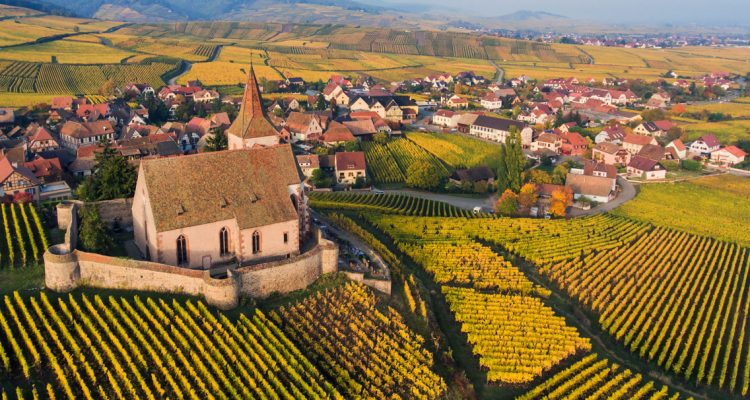
I recently spent a (virtual) week in Alsace, France getting to know the wines through a handful of small, family wineries in the area. With 400 years of modern winemaking at the Jean-Baptiste Adam Winery, I have to admit I was a bit intimidated to talk with young Laure Adam because she is the 15th generation of winemakers in her family. I mean, what do you talk about with someone from a winery that was established in the year 1614? It turns out, there’s plenty to talk about.
Organic & Biodynamic
At the Jean-Baptiste Adam winery, the Adam family was one of the first in Alsace to develop their wines with the benefit of organic production. Back in the 1980s, when Laure’s father Jean-Baptiste came back from viticulture school he wanted to make a lot of changes. Of course he got plenty of pushback from his own father, Jean. But he persevered, and soon began shifting the vineyards into organic cultivation.

It was tough going at the Adam winery for the first few years while the grapevines struggled to find their strength and balance without chemical fertilizers and insecticides being thrown on them. The family took more time studying their grapevines, providing organic compost and trying to discern what they needed to do for the well-being of their vineyards without chemical intervention.
They became so involved in balancing their cultivation with natural principles that in 1991 they decided to take the next step and move toward being biodynamic. Biodynamic vineyards were considered fairly radical in Alsace then, but now the region proudly boasts it contains 11.5% of all the biodynamic vineyards in France. Biodynamic cultivation involves extremely rigorous observation and dedication, with concoctions of herbs, roots and natural compost used to dress the vineyards at specific times of the year. Even during harvest, the family’s dedication to the vineyards persists, because all the grapes are hand-harvested here.
Laure’s father also began making sparkling wine, Cremant d’Alsace, a style of wine that has been increasing in popularity, as our worldwide appetite for sparkling wines has grown. Called Cremant d’Alsace, their popularity has grown dramatically over the past decade or so, to the point that Cremant d’Alsace white and rosé sparkling wines now make up 29% of Alsace’s production. Sixty-seven percent of still wines are produced under Alsace’s rigorous AOC designation (Appellation d’Origine Contrôlée) while only 4% of the wines are made from the rare Grand Cru vineyards.
Climate Change
Laure says that over the years, their organic and biodynamic grapevines have become incredibly resilient. Even in the face of recent climate change that has warmed the vineyards yet also blanketed them with periodic bouts of destructive humidity and very severe storms.
The wines have also increased in complexity over the past few decades, according to Laure. She finds more appealing notes of minerality and salinity, complementing the natural fruit flavors and aromas, and adding length to the dry finishes of the wines.
The Wines
2017 Jean-Bapiste Adam Riesling “Kaefferkopf” Vieilles Vignes Grand Cru — A complex wine. There’s a lot going on in the glass, beginning with aromas of flowers and sassafras and a hint of delicate chalkiness. On the palate there’s minerality, fennel, lemon and grapefruit. Full bodied with a long finish. This wine comes from a small but great vintage, says Laure Adam.
2018 Jean-Bapiste Adam Réserve Pinot Noir — A wonderfully classic Pinot Noir wine, very Burgundian in style. Medium-light brown-red color, with a medium body. Foresty aromas with cherries that persist on the palate, surrounded by spices and herbs. Finishes fruity yet dry.

